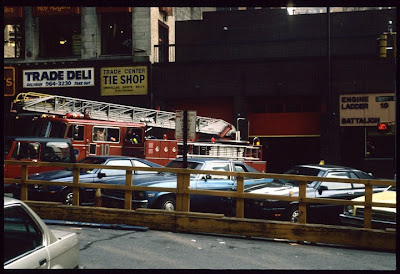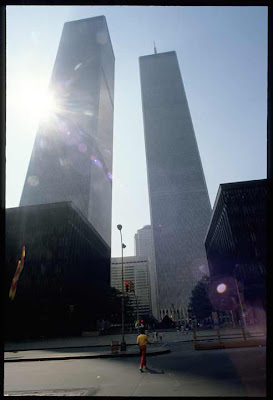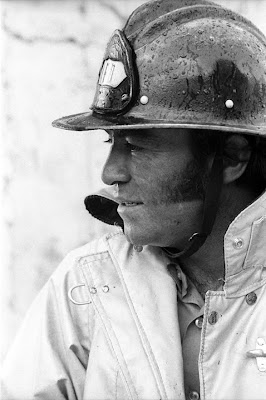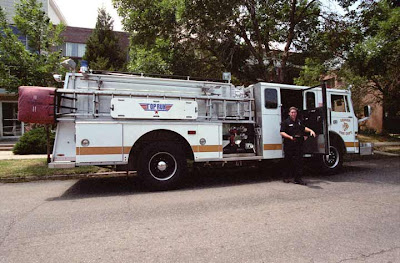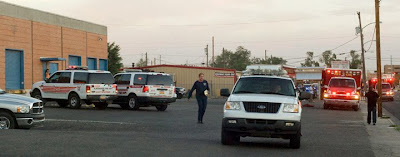 On August 20, 2010, I had a chance meeting with Secretary of State Mary Herrera in the Capitol Annex.
On August 20, 2010, I had a chance meeting with Secretary of State Mary Herrera in the Capitol Annex.There had been news reports that Herrera filed a request under the State’s Inspection of Public Records Act for e-mails between and among several state, county and city employees along with five current employees: Office Administrator Manuel Vildasol, Uniform Commercial Code James Pérez, Bureau of Elections computer specialist Steve Fresquez, Bureau of Elections Maria-Elena Rodella, and Administrator for the State Bureau of Elections Kelli Baca, formally Fulgenzi, and at least one former employee, Herrera’s first Elections Bureau Chief Daniel Ivy-Soto, who is now the Executive Director of NM Clerks and works with County Clerks around the State.
I asked Herrera what the inspection of public records request was about.
Herrera said that she was aware that two of her staff had received an e-mail and was told of its contents.
Herrera asked that the e-mails be forwarded to her, but they were not forthcoming so she, as an ordinary citizen, filed the inspection of public records request.
I asked her if she thought she would get them in a timely manner.
She laughed and said she would get the three-day notification and it would take the entire 15-days (as allowed by law) to receive them.
She did not elaborate about what she was told was in the e-mails.
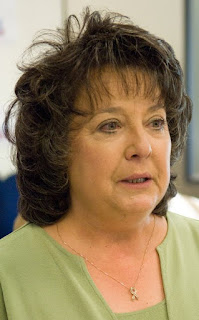 The public records request Herrera sought were e-mails of: President of the State Association for County Clerks Affiliates Sheryl Nichols, who is also chief deputy clerk of Los Alamos County, Santa Fe County Clerk Valerie Espinoza, Santa Fe County Deputy Clerk Denise Lamb, Bernalillo County Chief Deputy Clerk Robert Adams, and Doña Ana Deputy County Clerk Mario Jimenez.
The public records request Herrera sought were e-mails of: President of the State Association for County Clerks Affiliates Sheryl Nichols, who is also chief deputy clerk of Los Alamos County, Santa Fe County Clerk Valerie Espinoza, Santa Fe County Deputy Clerk Denise Lamb, Bernalillo County Chief Deputy Clerk Robert Adams, and Doña Ana Deputy County Clerk Mario Jimenez.Espinoza considered running against Herrera in the June 1 Democratic primary, but chose not to challenge the first term Secretary of State.
Espinoza is openly supporting Herrera’s GOP opponent, State Senator and former Otero County Clerk Dianna Duran, right.
“Don Francisco (Trujillo II,) has convinced her (Herrera) to believe that she cannot survive without him,” a former employee who spoke on conditions of anonymity because of fear of retribution said.
Deputy Secretary of State “Don Francisco systematically attempted to separate the people that Mary Herrera had brought with her when she came into office more than three and a half years ago from her,” the former employee said.
“Don Francisco micro manages everything and with the firing of Vildasol and (Public Information Officer James) Flores, Don Francisco has captured the crown jewels,” the person said.
Republican State Representative Janice Arnold-Jones, below, of Albuquerque’s mid-height’s district 24 said on her new talk radio program on AM 1550 KVIA, “New Mexico Now,” that the office of the Secretary of State has the highest turn over of any department or agency in State Government.
 Another former employee who also wishes to remain anonymous because of fear of retribution said the turnover rate was just over one hundred percent; that there were 34 full-time employees in addition to one or two part-time positions.
Another former employee who also wishes to remain anonymous because of fear of retribution said the turnover rate was just over one hundred percent; that there were 34 full-time employees in addition to one or two part-time positions.There are three categories of employees who have cycled through the office: those who were civil service workers who had been in the office when the prior Secretary of State Rebecca Vigil-Giron left office and 11 have since left, those workers who had come to work with Mary Herrera and have left, and those workers who had come to work since Herrera took office and have left; the total number in these two categories is 28.
Herrera denies that she has the highest turnover rate of state agencies, but has not provided any numbers to disprove the allegation or to point to any agency with a higher turnover rate.

Sidebar:
There are two ways to look at these numbers. Being a small agency, some 33 employees, it is reasonable that some large agency could easily have more employees leave their workforce. The other way to look at the numbers is, the number of turnovers as a percentage of the total number of employees. Both statements could be accurate.
A contributing factor is the size of the SoS's office and the intimacy that it provides in working very closely together is not common in larger agencies, making the internal politics much more pronounced than in the rest of the state’s government.
 Arnold-Jones has been critical of the Campaign Finance Information System. During the legislator, Trujillo called her up to ask her to come to the SoS office to test the system.
Arnold-Jones has been critical of the Campaign Finance Information System. During the legislator, Trujillo called her up to ask her to come to the SoS office to test the system.She asked for a computer link, but Trujillo wouldn’t provide it saying she needed to come to the office to test it. Arnold-Jones explained that the system was funded and provided for to specifically keep her from ever having to physically go to the SoS's office, but to make all reports by computer via the internet. Arnold-Jones wanted to test it in a real-world environment.
Trujillo was never able to provide a link for her to test, Arnold-Jones said. The system has since gone on line. No log on required, click public reports.
In three and a half years, there have been six full-time or interim Information Systems Directors: Gabe Duran, who was on contract, Phyllis Vigil, Edward Sigman, Jose Hernandez, Kelli Fulgenzi, Venkatesh Dhagumudi, and most recently Hari Singh now holds the position temporarily.
At one point, when there was a major computer problem, New Mexico Environment Department’s Chief Information Officer and Information Technology Director Lynn Harris came into the office; Salazar described her as, "IT Director on loan,"
Senior Research Scientist with ICASA (Institute for Complex Additive Systems Analysis) Srinivas Mukkamala of the New Mexico Institute of Mining and Technology Computer Science Department and members of his team from Computational Analysis and Network Enterprise Solutions, LLC (CAaNES) accompanied Harris and discovered that an employee had breached the SoS’s computer’s security firewall without authorization, causing it to crash.
In his February 26, 2010 resignation letter, Salazar explains his role in trying to uncover the cause of the crash and Herrera’s response to his un-welcomed information.
You also pointed out that I had previously "gone over your head" when I reported Mr. Paul Flaherty to you and our previous "IT Director on loan," Ms. Lynn Harris the fact that Mr. Flaherty violated State IT and SoS policy by breaching the security of our computer network by giving himself unauthorized access---essentially "hacking" into the administrative portion of the network. Ms. Harris indeed recommended that Mr. Flaherty be terminated for his actions.Salazar noted that Flaherty had come into his office, moving things and photographing his computer. Though Herrera promised Salazar that Flaherty’s actions would be investigated, nothing has happened. Flaherty remains in the office.
Salazar also pointed out:
The appearance of impropriety overshadows the decision to do nothing, as Mr. Flaherty's wife (Lou Baker) is a political supporter of yours.In late 2009 Flaherty and wife Baker held a fund raiser for Herrera.
The crash happened June 18, 2009 while several of the senior staff attended a National Association of Latino Elected and Appointed Officials conference.
On March 25, 2009, Herrera was elected NALAO’s President. She was the organization’s Vice President and was voted to fill the unexpired term of Adolfo Carrión, who resigned to become Director of Urban Affairs in the Obama administration.
Herrera ran for a full term as president, but was defeated when the Board of Directors unanimously elected Harris County, (Houston), Texas Commissioner, Sylvia R. Garcia.
Deputy Secretary of State Trujillo was elected to serve as secretary and currently serves on the 2010-2011 Board of Directors as NALAO’s Vice President.
There were concerns around the office during the crash that a number of senior staff went to Los Angeles for the NALAO conference during the middle of the computer crash and the crisis it caused.
Trujillo took a week long vacation after the conference to Denver, according to one source.
 Fulgenzi, above, lower right, was a former Albuquerque assistant city clerk and an assistant clerk in the office of Albuquerque City Council, she was not known to have much education, knowledge, or experience in the information technology field at a level necessary to fulfill the role.
Fulgenzi, above, lower right, was a former Albuquerque assistant city clerk and an assistant clerk in the office of Albuquerque City Council, she was not known to have much education, knowledge, or experience in the information technology field at a level necessary to fulfill the role.
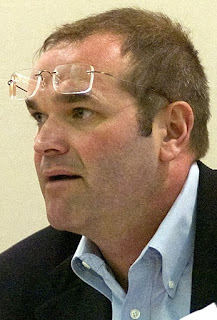 There have also been five Administrators of the Bureau of Elections: Ivy-Soto who served 15 months, until March of 2008; Jim Noel, right, who was hired August 28, 2008, but never served, Gerald Gonzalez, who served two and a half months from Sept. – Dec. 2008; then the position was vacant 10 to 11 months until A.J. Salazar, who resigned February 26, 2010, with his fiery letter, and currently Trujillo claims a dual role as Dep. Sec. of State and Director, Bureau of Elections, he was interim director during vacancies in 2008 and 2009.
There have also been five Administrators of the Bureau of Elections: Ivy-Soto who served 15 months, until March of 2008; Jim Noel, right, who was hired August 28, 2008, but never served, Gerald Gonzalez, who served two and a half months from Sept. – Dec. 2008; then the position was vacant 10 to 11 months until A.J. Salazar, who resigned February 26, 2010, with his fiery letter, and currently Trujillo claims a dual role as Dep. Sec. of State and Director, Bureau of Elections, he was interim director during vacancies in 2008 and 2009.
Noel didn't take the job. There was speculation that because he was married to Amanda Cooper, Congressman Tom Udall's stepdaughter and his run for the US Senate seat vacated by Sen. Pete Domenici; insiders say he got to know Trujillo a bit better and returned to his post at the of Executive Director and General Counsel at New Mexico Judicial Standards Commission. Noel now is Cabinet Secretary for the Energy, Minerals and Natural Resources Department.
Salazar’s un-redacted resignation letter was first published in the Rio Grande Sun.
 Fulgenzi, above, lower right, was a former Albuquerque assistant city clerk and an assistant clerk in the office of Albuquerque City Council, she was not known to have much education, knowledge, or experience in the information technology field at a level necessary to fulfill the role.
Fulgenzi, above, lower right, was a former Albuquerque assistant city clerk and an assistant clerk in the office of Albuquerque City Council, she was not known to have much education, knowledge, or experience in the information technology field at a level necessary to fulfill the role. There have also been five Administrators of the Bureau of Elections: Ivy-Soto who served 15 months, until March of 2008; Jim Noel, right, who was hired August 28, 2008, but never served, Gerald Gonzalez, who served two and a half months from Sept. – Dec. 2008; then the position was vacant 10 to 11 months until A.J. Salazar, who resigned February 26, 2010, with his fiery letter, and currently Trujillo claims a dual role as Dep. Sec. of State and Director, Bureau of Elections, he was interim director during vacancies in 2008 and 2009.
There have also been five Administrators of the Bureau of Elections: Ivy-Soto who served 15 months, until March of 2008; Jim Noel, right, who was hired August 28, 2008, but never served, Gerald Gonzalez, who served two and a half months from Sept. – Dec. 2008; then the position was vacant 10 to 11 months until A.J. Salazar, who resigned February 26, 2010, with his fiery letter, and currently Trujillo claims a dual role as Dep. Sec. of State and Director, Bureau of Elections, he was interim director during vacancies in 2008 and 2009.Noel didn't take the job. There was speculation that because he was married to Amanda Cooper, Congressman Tom Udall's stepdaughter and his run for the US Senate seat vacated by Sen. Pete Domenici; insiders say he got to know Trujillo a bit better and returned to his post at the of Executive Director and General Counsel at New Mexico Judicial Standards Commission. Noel now is Cabinet Secretary for the Energy, Minerals and Natural Resources Department.
Salazar’s un-redacted resignation letter was first published in the Rio Grande Sun.
Vidasol turned over a video to KOB TV Eyewitness News Reporter Gadi Schwartz after talking to the Federal Bureau of Investigations.
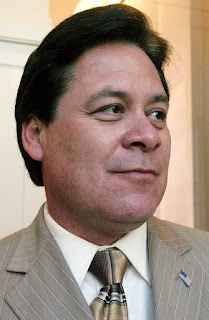 Public Information Officer James Flores, left, also spoke with the FBI.
Public Information Officer James Flores, left, also spoke with the FBI.
 Public Information Officer James Flores, left, also spoke with the FBI.
Public Information Officer James Flores, left, also spoke with the FBI.KOB aired Schwartz’ reporting in a story, “Virus infects Sec. of State's computer.”
Schwartz later reported Sept. 7, 2010 on KOB, “Secretary of State fires top staffers, ” Vildasol and Flores.
On August 26, 2010, Rob Nikolewski Posted on New Mexico Watchdog, “How weird are things getting at the Secretary of State’s Office? This weird.”
Nikolewski shot a couple of his flip-cam-videos of Herrera explaining why she thought the allegations had come about. Her answer was rambling and started to get interminable, it ran long so Nikolewski could get to Herrera’s punch line.
If one looks at her re-election campaign website’s photo page you can see many pictures of her and her campaigners wearing red shirts touting voting for Herrera; the problem is some shirts are emblazoned with the Great Seal of the State of New Mexico and that would violate her duty as "the keeper of the Great Seal of the State of New Mexico, and affixes the seal to all commissions issued in the name of the Governor."
 It is the duty of the Secretary of State to protect the seal against any improper use, which includes it being used in political campaigns, as Herrera is doing.
It is the duty of the Secretary of State to protect the seal against any improper use, which includes it being used in political campaigns, as Herrera is doing.
 So what’s wrong with this picture?
So what’s wrong with this picture?
Why would Herrera have to ask for an IPRA to obtain an e-mail from her own staff?
Isn’t her request an order that, if not complied with, constitutes an insubordination?
If the staff weren’t forthcoming, why would she have to go outside her own agency with an IPRA request, why not go to her office's information technology person and pull up the e-mail of her employees?
The most important question, as related to Office Administrator Vildasol’s having secretly videoed the computer virus, is not that it provided pornographic material, but that the Secretary of State’s computer system was so insecure as to allow any virus to attack it.
The Secretary of State’s computer system contains more than 1.3 million records, which include: legal names, secured addresses, dates of birth, and social security numbers.
Is the Secretary of State’s computer system a totally self-contained secured computer that is not accessible from the Internet?
If not, then why not?
The final question is what is the culture in the Secretary of State’s office that makes a senior employee feel it necessary to resort to secretly videoing problems, such as pornographic site icons on Herrera’s laptop. The laptop had not been in her office for a couple of years.
The anonymous sources both confirmed that employees found it necessary to document activities that might be viewed as negative because Herrera and Trujillo routinely lied to cover up problems in the office. So, when this matter came up, apparently Vildasol decided he needed to protect himself by collecting video evidence.
Herrera, through Trujillo, told the press that her laptop did not have anti-virus software protection. However, one of the former employees revealed that an IT employee had personally installed such protection well before this problem occurred.
According to the sources, this is not the first time Herrera and Trujillo told the press that there was no problem when in fact there were problems and they lied to cover them up.
A.J. Salazar and Vildasol had come to the conclusion that there are possible violations of law in the Secretary of State’s office; Salazar resigned as Administrator of the Bureau of Elections and put his concerns in his resignation letter and reported his concerns to the Attorney General, according to Espanola based Attorney Rudy Martin who represents: Salazar, Vildasol, and Flores.
After several months when the Attorney General’s office took no action, Vildasol took his concerns to the Federal Bureau of Investigation Vildasol publicized the fact and Flores’ contact with the FBI also became known.
Salazar wrote:
The forcing of office workers to donate time on weekends without pay to attend small town parades and even the State Fair parade where some other costs were paid at taxpayer's expense associated with manning the floats, the wearing red and white T-shirts of Herrera's campaign, under the guise of being a voter education effort.
Schwartz later reported Sept. 7, 2010 on KOB, “Secretary of State fires top staffers, ” Vildasol and Flores.
On August 26, 2010, Rob Nikolewski Posted on New Mexico Watchdog, “How weird are things getting at the Secretary of State’s Office? This weird.”
Nikolewski shot a couple of his flip-cam-videos of Herrera explaining why she thought the allegations had come about. Her answer was rambling and started to get interminable, it ran long so Nikolewski could get to Herrera’s punch line.
…I am very proud of my staff and I don’t know why all of the accusations, I don’t know why all of this is happening, it’s election year, I am very proud of this office, and I stick by my employee who are great workers and are committed and that are loyal.On August 28th, 2010, Nikolewski reported on his Capitol Report New Mexico blog, “Update on Secretary of State flap: The AG’s office looking into allegations,” repeating an Albuquerque Journal article,
If one looks at her re-election campaign website’s photo page you can see many pictures of her and her campaigners wearing red shirts touting voting for Herrera; the problem is some shirts are emblazoned with the Great Seal of the State of New Mexico and that would violate her duty as "the keeper of the Great Seal of the State of New Mexico, and affixes the seal to all commissions issued in the name of the Governor."
 It is the duty of the Secretary of State to protect the seal against any improper use, which includes it being used in political campaigns, as Herrera is doing.
It is the duty of the Secretary of State to protect the seal against any improper use, which includes it being used in political campaigns, as Herrera is doing. So what’s wrong with this picture?
So what’s wrong with this picture?Why would Herrera have to ask for an IPRA to obtain an e-mail from her own staff?
Isn’t her request an order that, if not complied with, constitutes an insubordination?
If the staff weren’t forthcoming, why would she have to go outside her own agency with an IPRA request, why not go to her office's information technology person and pull up the e-mail of her employees?
The most important question, as related to Office Administrator Vildasol’s having secretly videoed the computer virus, is not that it provided pornographic material, but that the Secretary of State’s computer system was so insecure as to allow any virus to attack it.
The Secretary of State’s computer system contains more than 1.3 million records, which include: legal names, secured addresses, dates of birth, and social security numbers.
Is the Secretary of State’s computer system a totally self-contained secured computer that is not accessible from the Internet?
If not, then why not?
The final question is what is the culture in the Secretary of State’s office that makes a senior employee feel it necessary to resort to secretly videoing problems, such as pornographic site icons on Herrera’s laptop. The laptop had not been in her office for a couple of years.
The anonymous sources both confirmed that employees found it necessary to document activities that might be viewed as negative because Herrera and Trujillo routinely lied to cover up problems in the office. So, when this matter came up, apparently Vildasol decided he needed to protect himself by collecting video evidence.
Herrera, through Trujillo, told the press that her laptop did not have anti-virus software protection. However, one of the former employees revealed that an IT employee had personally installed such protection well before this problem occurred.
According to the sources, this is not the first time Herrera and Trujillo told the press that there was no problem when in fact there were problems and they lied to cover them up.
A.J. Salazar and Vildasol had come to the conclusion that there are possible violations of law in the Secretary of State’s office; Salazar resigned as Administrator of the Bureau of Elections and put his concerns in his resignation letter and reported his concerns to the Attorney General, according to Espanola based Attorney Rudy Martin who represents: Salazar, Vildasol, and Flores.
After several months when the Attorney General’s office took no action, Vildasol took his concerns to the Federal Bureau of Investigation Vildasol publicized the fact and Flores’ contact with the FBI also became known.
Salazar wrote:
During my tenure in your office it has become abundantly clear to me as to why my predecessors have left the office.Salazar wrote that he didn’t have direct control of the people assigned to work for him because Trujillo would take operational control of his staff.
In fact, there are different organizational charts which he has created which seem to be contradictory and confuse the chain of command within the office. I cannot be an effective Director when my decisions are constantly undermined. The Bureau itself cannot be effective when we have such cronyism, insubordination and undermining behavior taking place by its employees, to include management.Salazar warned Herrera:
… I have repeated(ly) advised you to not violate the New Mexico Governmental Conduct Act. In order to support the upcoming Elections Seminar, you have insisted that we obtain "sponsorships" or donations through targeted communications with firms or businesses with whom we currently contract. As the Bureau of Elections Director, I sought advice from our office counsel at the Attorney General's office regarding the legalities of this action. This is well documented via email. Rather than acknowledge that my actions potentially kept our office from engaging in illegal behavior, you accused me of "going over your head" by contacting our counsel and stated that I was not involved in this decision. You stated that sponsorships are not donations and I should focus on other tasks.Salazar alleged improper political activities in support of Herrera’s own campaign:
… For example, when your campaign manager appeared to be doing campaign business from your office on filing day, I asked that he step outside the office and remain with other filers in the halls of our building. Further, I remind you that all Governor's Exempt ("GOVEX") employees were called into your office in October, 2009 during work hours and were ordered to get 1,000 petition signatures each for your reelection campaign.The accusations also included:
The forcing of office workers to donate time on weekends without pay to attend small town parades and even the State Fair parade where some other costs were paid at taxpayer's expense associated with manning the floats, the wearing red and white T-shirts of Herrera's campaign, under the guise of being a voter education effort.
The floats used the red and white color scheme and print type face of Herrera's campaign while also pushing voter education, registration, and get out the vote messages while reinforcing the campaign effort.
Herrera expected exempt staff to participate in these around the state parades and until this year engaged in the dual office and campaign mix, but his year has made the floats about campaigning.
Herrera denied there was any wrongdoing in her office according to an article by Associated Press Writer Barry Massey.
September 07, 201, Herrera “talked late Monday,” with Blogger Joe Monahan who broke the story, on the reasons she fired Vildasol and Flores; after an investigations into making audio and video recordings of fellow employees in the office who complained.
She had placed Vildasol on paid administrative leave after he publicly announced he had spoken with the FBI. When Flores went to the FBI she placed him on administrative leave with pay until the investigation was complete.
Also on Tuesday, September 07, The New Mexican’s Political Reporter Steve Terrell in an article, “Secretary of State Mary Herrera axes critics: Ex-exempt workers may sue, citing whistle-blower law,” posting:
 In Jim Baca’s September 08, 2010, “Only in New Mexico” blogpost, he wrote:
In Jim Baca’s September 08, 2010, “Only in New Mexico” blogpost, he wrote:
He is also right that it, not only sounds counter intuitive, but is counter intuitive.
The age-old thinking is that the king selects his ministers; in this country when Thomas Jefferson turned out John Adams the spoils system took hold and by Andrew Jackson’s administration, the phrase by U.S. Sen. William Learned Marcy, N.Y., Jacksonian, “to the victors go the spoils,” was well entrenched.
Administrations would wholesale clean out the entire prior administration’s work force and replace it with their own loyalists.
It was recognized that the practice washed away corporate history with each change.
However, it wasn’t until July 2, 1881, when a disgruntled office seeker, Charles Guiteau assassinated President James Garfield, that the concept of a merit based system of hiring and retaining governmental employees took hold through the 1883 Pendleton Civil Service Reform Act.
The act created a means of hiring most federal government employees through a testing, selection, residency, and probationary process, but it did not address the top tiers of government to be appointed to serve at the pleasure of elected officials.
This is an archaic practice, as now employee professionalism requires them to perform to the highest standards and to serve the duties of their job; yet the thinking still is the elected official may appoint a limited number of people they trust.
The requirement that top appointed officials get the approval of the State Senate doesn’t apply to all appointees and their qualifications are not always sufficiently or thoroughly examined or tested.
An elected official has the prerogative to prosecute the agenda upon which they were elected, as long as they stay within the bounds of their constitutional and statutory obligations.
Normally, any appointed employee can be terminated for a good reason, a bad reason, or no reason, but they can’t be terminated for an illegal reason.
In this case, Vildasol and Flores fall under the protection of the State’s Whistleblower’s Act; they had a duty to report suspected illegal activity to the proper authorities.
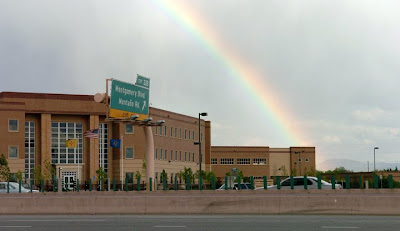 The FBI is such an authority. The Albuquerque FBI Field office is seen here at Luecking Park Ave N.E. along Pan American Freeway next to Interstate Highway 25.
The FBI is such an authority. The Albuquerque FBI Field office is seen here at Luecking Park Ave N.E. along Pan American Freeway next to Interstate Highway 25.
 My Take:
My Take:
 The Secretary of State Herrera, in a campaign stunt threw beanbags, like horseshoes, simulating Kraft Cheese Singles, in a promotional game, onto a tarp with hamburgers printed on it, at the August 31, 2010, Iowa Cubs vs. Isotopes baseball game.
The Secretary of State Herrera, in a campaign stunt threw beanbags, like horseshoes, simulating Kraft Cheese Singles, in a promotional game, onto a tarp with hamburgers printed on it, at the August 31, 2010, Iowa Cubs vs. Isotopes baseball game.
She had on her campaign t-shirt and was accompanied by her sister, Lori Salazar; they tied with an opposing team with two cheeseburgers each.
Herrera waved to the crowd, but no comments...
My question was; where's the beef?
Monahan called me about another unrelated issue and I asked why he hadn't used the picture; he'd acknowledged receipt of it. I told him what I had learned about his work for the SoS's office and asked if he wanted to make a comment. He said he had done some public relations work and had to make a living. I told him I had not seen a disclaimer. He said he made one, but if it was time to make another, he would. Monahan asked for a second shot that was cropped tighter and he ran this one below. These are actually still frame grabs from video.
 Monahan wrote this caption:
Monahan wrote this caption:
 Clearly Herrera’s stated requirement of (personal) loyalty overrides the duty of employees’ to uphold professional and ethical standards, to do their jobs properly without undue political influence, and now Vildasol and Flores can no longer serve her.
Clearly Herrera’s stated requirement of (personal) loyalty overrides the duty of employees’ to uphold professional and ethical standards, to do their jobs properly without undue political influence, and now Vildasol and Flores can no longer serve her.
This however, does not relieve Herrera and Trujillo from exposure for illegal firings and damages that may be awarded.
Herrera’s charge against Flores altering the media distribution list is absurd on its face.
The purpose of the media distribution list is to send out press releases for the purpose of having widespread dispensation of information the SoS office wants out.
There should be no problem if there is a list of more than just media on it; anyone in the public should be able to receive releases and the SoS should be grateful for the interest.
The idea that maybe the Santa Fe County Clerk is on the list should not be looked at as a political enemy, but as an office with a symbiotic relationship. The SoS is not putting out any state secrets; they are putting out information that they think the public should have.
In Journalism school, one is taught how to write a press release and are informed about the number of press releases that editors receive each day, how difficult it is to catch their attention, and the percentages of those that get the message published.
By example, I am on the City of Albuquerque’s mass media mailing list, I get releases from: the City’s Communications Director, ABQ BioPark Zoo, Aquarium, Botanic Garden and Tingley Beach, animal shelters, Economic Development Department, Cultural Services, Public Service Public Information Officer, the Police Department’s Public Information Officer, the Crime Stoppers coordinator, the Fire Department’ Public Information Officer, and others.
Some of theses and Crime Stoppers in particular have long lists of interested citizens and peripheral groups who asked to be added to the list.
If the goal is to have the widest possible dissemination of information, then being so controlling of the list, not allowing the public information officer to use his discretion in adding people's names to an e-mail list to send out a blast of press releases is considered a firing offense, then altering the media distribution list without the strict permission of Herrera or Trujillo smacks more of fear of general knowledge being spread to specific people who are thought by them to be political enemies.
I believe any reasonable person could see around this pretext.
If Vildasol and Flores were fired for creating a hostile work environment, then lets examine what the atmosphere was their fellow workers found so toxic.
Vildasol, as office manager, videoed fellow employees doing the job they are paid to do. The "evidence" doesn't fall on the employee, in this case Jose Hernandez, the one-time IT director who had gone back to his non-exempt job because of the heavy work load. only parts of Hernandez were visible in the KOB story and a voice, which might or might not have been recognizable.
In an atmosphere of deep paranoia, as not only my sources said, but several others close to this situation, have described of Herrera's state, it is very likely that the employees who were scrubbing the laptop clear, did not want to be identified. If as indicated, should the employees be called at some point, should Herrera and Trujillo be untruthful about the circumstances of this or other perceived embarrassments, then being recorded would not allow the employees to equivocate.

Herrera denied there was any wrongdoing in her office according to an article by Associated Press Writer Barry Massey.
September 07, 201, Herrera “talked late Monday,” with Blogger Joe Monahan who broke the story, on the reasons she fired Vildasol and Flores; after an investigations into making audio and video recordings of fellow employees in the office who complained.
She had placed Vildasol on paid administrative leave after he publicly announced he had spoken with the FBI. When Flores went to the FBI she placed him on administrative leave with pay until the investigation was complete.
Also on Tuesday, September 07, The New Mexican’s Political Reporter Steve Terrell in an article, “Secretary of State Mary Herrera axes critics: Ex-exempt workers may sue, citing whistle-blower law,” posting:
On Aug. 24, Trujillo wrote Flores saying, "the Secretary of State has received a complaint about a hostile work environment and is concerned with what appears to be an altered media distribution list. You are the subject of the investigation."
The reference to the "altered media distribution list" might support a claim by some Secretary of State's Office sources that Herrera suspected Flores of sending e-mail news releases to Santa Fe County Clerk Valerie Espinoza — who is a critic of Herrera — and to Salazar, who resigned earlier this year, sending Herrera a scathing letter accusing her of several possible violations of law or policy, including having her staff do political campaign work in the office during work hours.
 In Jim Baca’s September 08, 2010, “Only in New Mexico” blogpost, he wrote:
In Jim Baca’s September 08, 2010, “Only in New Mexico” blogpost, he wrote:I see where two political appointees, who serve at will of the elected Secretary of State, will sue her for their dismissals despite having no rights under the personnel system. This is something that should be squashed immediately, or soon an elected official, no matter if they are competent or not, will never be able to hire or fire their own team. I know this sounds counter intuitive but it is the way things should work.Baca is right about the fact that political appointees are not covered by personnel rules that require just cause and due process to fire them.
He is also right that it, not only sounds counter intuitive, but is counter intuitive.
The age-old thinking is that the king selects his ministers; in this country when Thomas Jefferson turned out John Adams the spoils system took hold and by Andrew Jackson’s administration, the phrase by U.S. Sen. William Learned Marcy, N.Y., Jacksonian, “to the victors go the spoils,” was well entrenched.
Administrations would wholesale clean out the entire prior administration’s work force and replace it with their own loyalists.
It was recognized that the practice washed away corporate history with each change.
However, it wasn’t until July 2, 1881, when a disgruntled office seeker, Charles Guiteau assassinated President James Garfield, that the concept of a merit based system of hiring and retaining governmental employees took hold through the 1883 Pendleton Civil Service Reform Act.
The act created a means of hiring most federal government employees through a testing, selection, residency, and probationary process, but it did not address the top tiers of government to be appointed to serve at the pleasure of elected officials.
This is an archaic practice, as now employee professionalism requires them to perform to the highest standards and to serve the duties of their job; yet the thinking still is the elected official may appoint a limited number of people they trust.
The requirement that top appointed officials get the approval of the State Senate doesn’t apply to all appointees and their qualifications are not always sufficiently or thoroughly examined or tested.
An elected official has the prerogative to prosecute the agenda upon which they were elected, as long as they stay within the bounds of their constitutional and statutory obligations.
Normally, any appointed employee can be terminated for a good reason, a bad reason, or no reason, but they can’t be terminated for an illegal reason.
In this case, Vildasol and Flores fall under the protection of the State’s Whistleblower’s Act; they had a duty to report suspected illegal activity to the proper authorities.
 The FBI is such an authority. The Albuquerque FBI Field office is seen here at Luecking Park Ave N.E. along Pan American Freeway next to Interstate Highway 25.
The FBI is such an authority. The Albuquerque FBI Field office is seen here at Luecking Park Ave N.E. along Pan American Freeway next to Interstate Highway 25. My Take:
My Take: The Secretary of State Herrera, in a campaign stunt threw beanbags, like horseshoes, simulating Kraft Cheese Singles, in a promotional game, onto a tarp with hamburgers printed on it, at the August 31, 2010, Iowa Cubs vs. Isotopes baseball game.
The Secretary of State Herrera, in a campaign stunt threw beanbags, like horseshoes, simulating Kraft Cheese Singles, in a promotional game, onto a tarp with hamburgers printed on it, at the August 31, 2010, Iowa Cubs vs. Isotopes baseball game.She had on her campaign t-shirt and was accompanied by her sister, Lori Salazar; they tied with an opposing team with two cheeseburgers each.
Herrera waved to the crowd, but no comments...
My question was; where's the beef?
Monahan called me about another unrelated issue and I asked why he hadn't used the picture; he'd acknowledged receipt of it. I told him what I had learned about his work for the SoS's office and asked if he wanted to make a comment. He said he had done some public relations work and had to make a living. I told him I had not seen a disclaimer. He said he made one, but if it was time to make another, he would. Monahan asked for a second shot that was cropped tighter and he ran this one below. These are actually still frame grabs from video.
 Monahan wrote this caption:
Monahan wrote this caption:The photo posted of Herrera today was taken by photog Mark Bralley at a recent ABQ Isotopes baseball game. He's been snapping Herrera since her days as Bernalillo County Clerk and before. We've also know her for years and did some professional PR work for the SOS office in '08 on a get-out-the-vote project.
 Clearly Herrera’s stated requirement of (personal) loyalty overrides the duty of employees’ to uphold professional and ethical standards, to do their jobs properly without undue political influence, and now Vildasol and Flores can no longer serve her.
Clearly Herrera’s stated requirement of (personal) loyalty overrides the duty of employees’ to uphold professional and ethical standards, to do their jobs properly without undue political influence, and now Vildasol and Flores can no longer serve her.This however, does not relieve Herrera and Trujillo from exposure for illegal firings and damages that may be awarded.
Herrera’s charge against Flores altering the media distribution list is absurd on its face.
The purpose of the media distribution list is to send out press releases for the purpose of having widespread dispensation of information the SoS office wants out.
There should be no problem if there is a list of more than just media on it; anyone in the public should be able to receive releases and the SoS should be grateful for the interest.
The idea that maybe the Santa Fe County Clerk is on the list should not be looked at as a political enemy, but as an office with a symbiotic relationship. The SoS is not putting out any state secrets; they are putting out information that they think the public should have.
In Journalism school, one is taught how to write a press release and are informed about the number of press releases that editors receive each day, how difficult it is to catch their attention, and the percentages of those that get the message published.
By example, I am on the City of Albuquerque’s mass media mailing list, I get releases from: the City’s Communications Director, ABQ BioPark Zoo, Aquarium, Botanic Garden and Tingley Beach, animal shelters, Economic Development Department, Cultural Services, Public Service Public Information Officer, the Police Department’s Public Information Officer, the Crime Stoppers coordinator, the Fire Department’ Public Information Officer, and others.
Some of theses and Crime Stoppers in particular have long lists of interested citizens and peripheral groups who asked to be added to the list.
If the goal is to have the widest possible dissemination of information, then being so controlling of the list, not allowing the public information officer to use his discretion in adding people's names to an e-mail list to send out a blast of press releases is considered a firing offense, then altering the media distribution list without the strict permission of Herrera or Trujillo smacks more of fear of general knowledge being spread to specific people who are thought by them to be political enemies.
I believe any reasonable person could see around this pretext.
If Vildasol and Flores were fired for creating a hostile work environment, then lets examine what the atmosphere was their fellow workers found so toxic.
Vildasol, as office manager, videoed fellow employees doing the job they are paid to do. The "evidence" doesn't fall on the employee, in this case Jose Hernandez, the one-time IT director who had gone back to his non-exempt job because of the heavy work load. only parts of Hernandez were visible in the KOB story and a voice, which might or might not have been recognizable.
In an atmosphere of deep paranoia, as not only my sources said, but several others close to this situation, have described of Herrera's state, it is very likely that the employees who were scrubbing the laptop clear, did not want to be identified. If as indicated, should the employees be called at some point, should Herrera and Trujillo be untruthful about the circumstances of this or other perceived embarrassments, then being recorded would not allow the employees to equivocate.

Disclosure:
I photographed Rep. Arnold-Jones during her recent campaigns and was made an importune guest when I went to photograph her inaugural radio broadcast.
She can be heard on, "New Mexico Now," Monday – Friday 4 pm -6:30 pm on AM 1550 KIVA.








